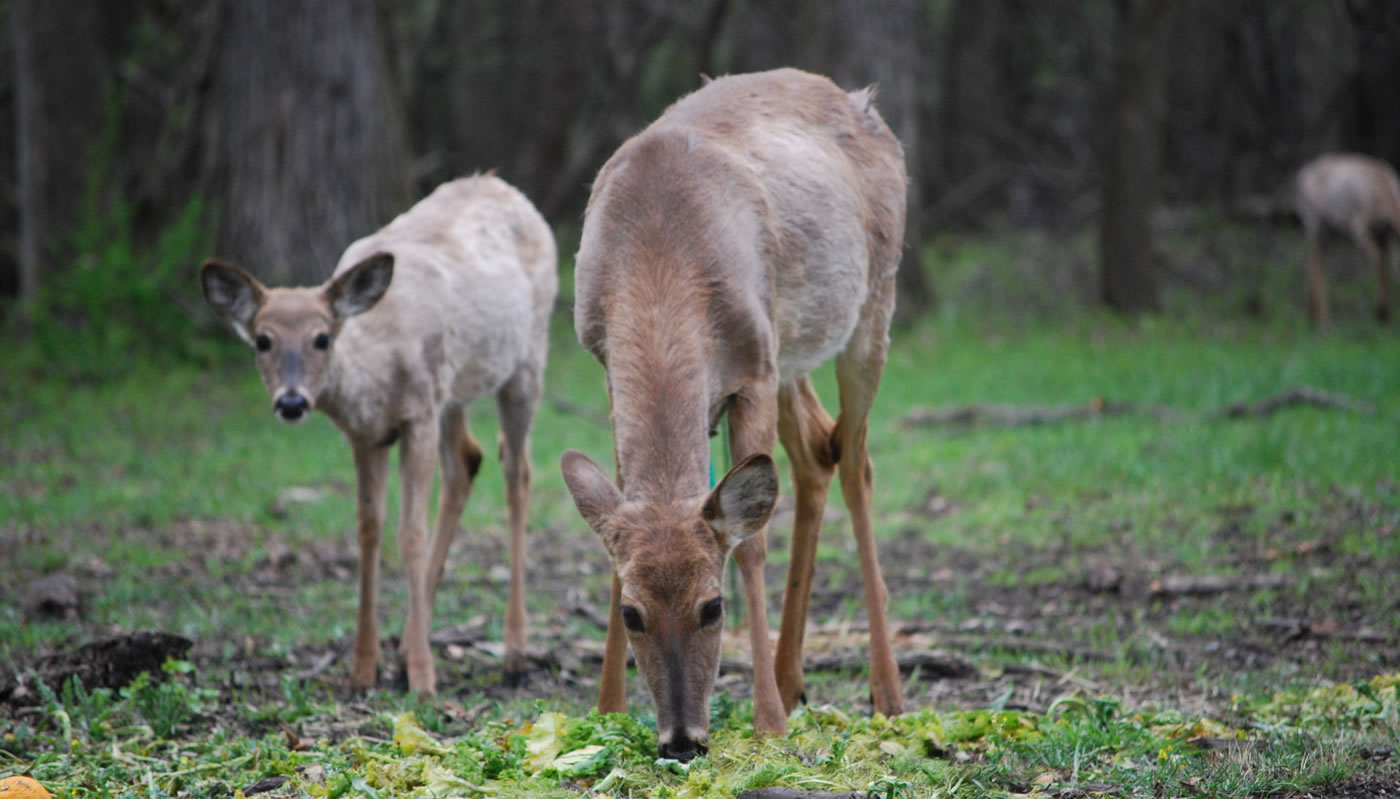Walking through the Forest Preserves of Cook County, visitors may encounter a variety of animals: deer, ducks, coyotes and more. While your instinct may be to feed them, it’s important to know that feeding wildlife causes more harm than good.
Why Can’t I Feed Wildlife?
Human Food Isn’t Good for Animals
Animals did not evolve to eat and digest human foods. Sugars in certain foods, such as bread, can cause tooth decay in animals. While humans can brush their teeth or visit a dentist to treat dental conditions, animals cannot. Tooth decay is painful and may prevent an animal from eating at all—leading to death from starvation.
Animals may fill up on human food and eat less of the wild, nutritious food they need to survive. Food left out for animals can spoil, grow mold or even promote algae growth if introduced to ponds or lakes—all of which can make animals sick.
Feeding Animals Makes Them Vulnerable
Feeding a wild animal may teach them to approach all humans for food, putting the animal and other humans in potentially dangerous situations. If fed from a car, wild animals may associate vehicles with food—leading to collisions.
Animals fed by humans may learn new behaviors or routines, like visiting an exposed feeding site, that can make them an easy meal for predators. Additionally, young animals raised on a steady source of human food may not learn the foraging or hunting techniques they need to survive in the wild.
Wild Animals Are Unpredictable
While a wild animal may sometimes exhibit behaviors seen in pets or other domestic animals, a sound, quick movement or seemingly nothing at all can trigger a wild animal to harm the person feeding them.
Animals Can Transmit Diseases
When animals gather at feeding sites created by humans, they are at higher risk of spreading diseases to each other. Additionally, by getting close to animals, humans can become susceptible to zoonotic diseases (disease spread between animals and humans).
It’ll Cost You
$75 per offense to be exact. The Forest Preserves’ Police and Resource Management Departments work with the Illinois Department of Natural Resources (IDNR) to identify and fine individuals who feed wildlife.
How Can I Support Animals Without Feeding Them?
Although feeding wildlife is not a good way to care for animals, you can support the animals you love by helping to improve their wild habitats. Learn more about volunteering at an Ecological Stewardship Day to help the Forest Preserves’ plants and animals thrive.

